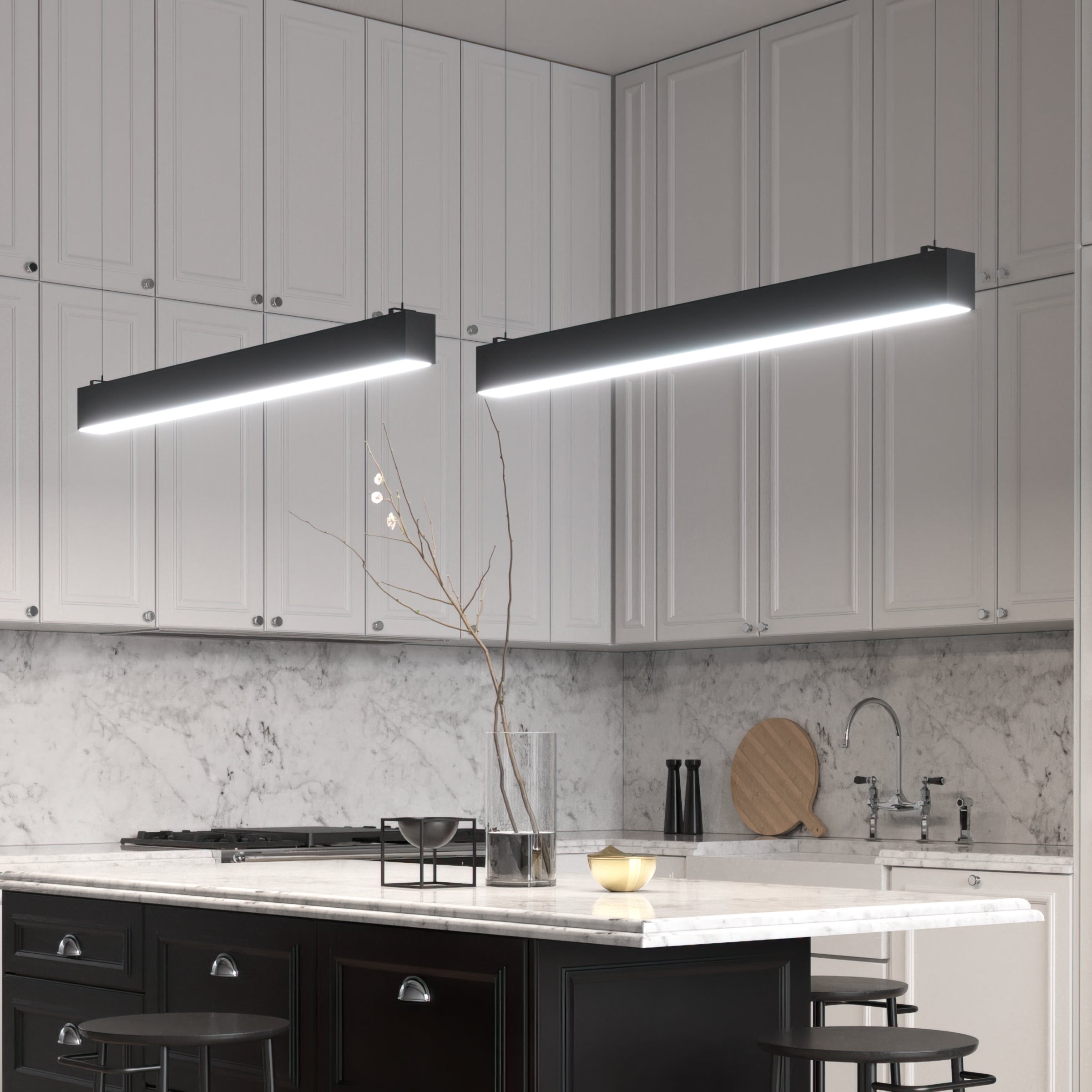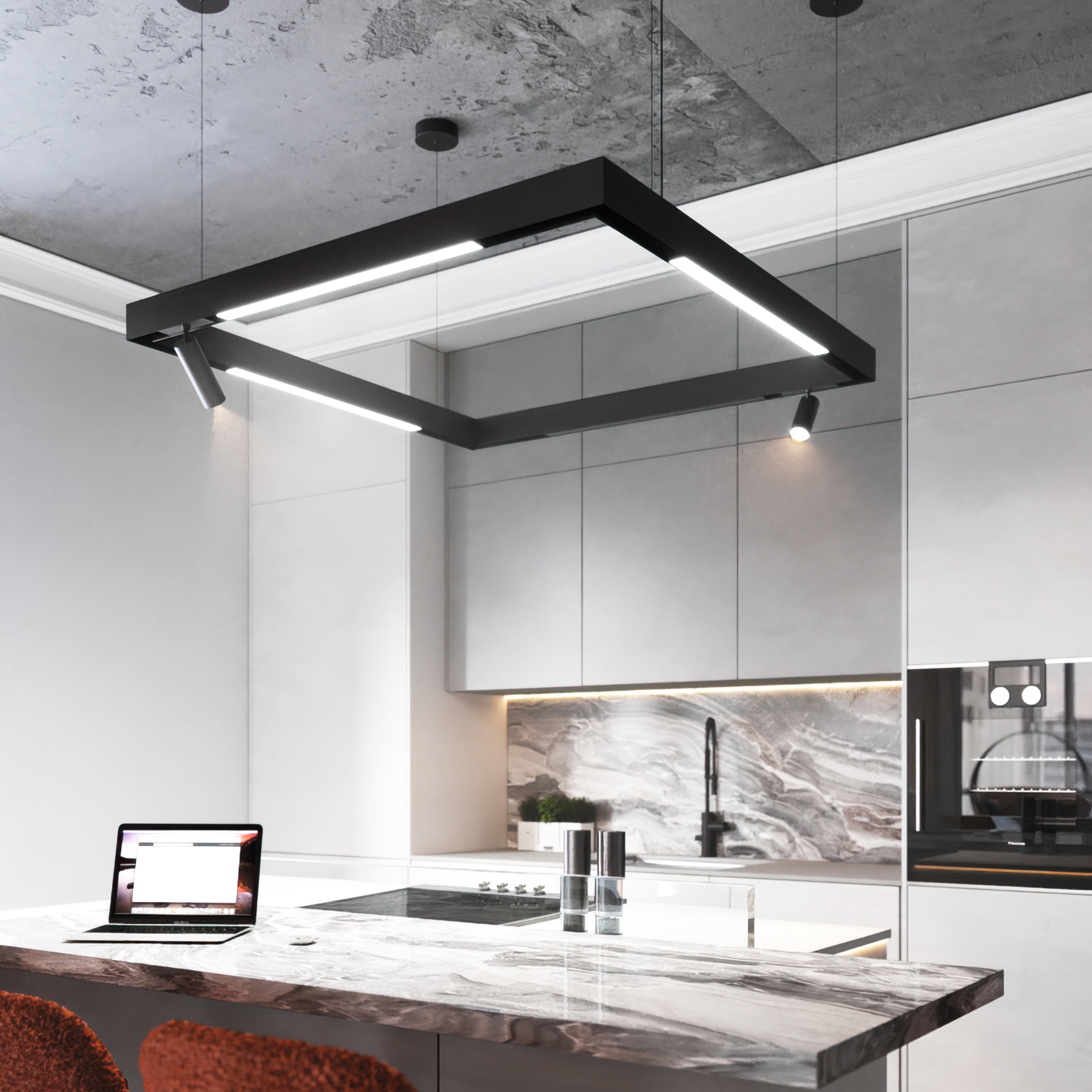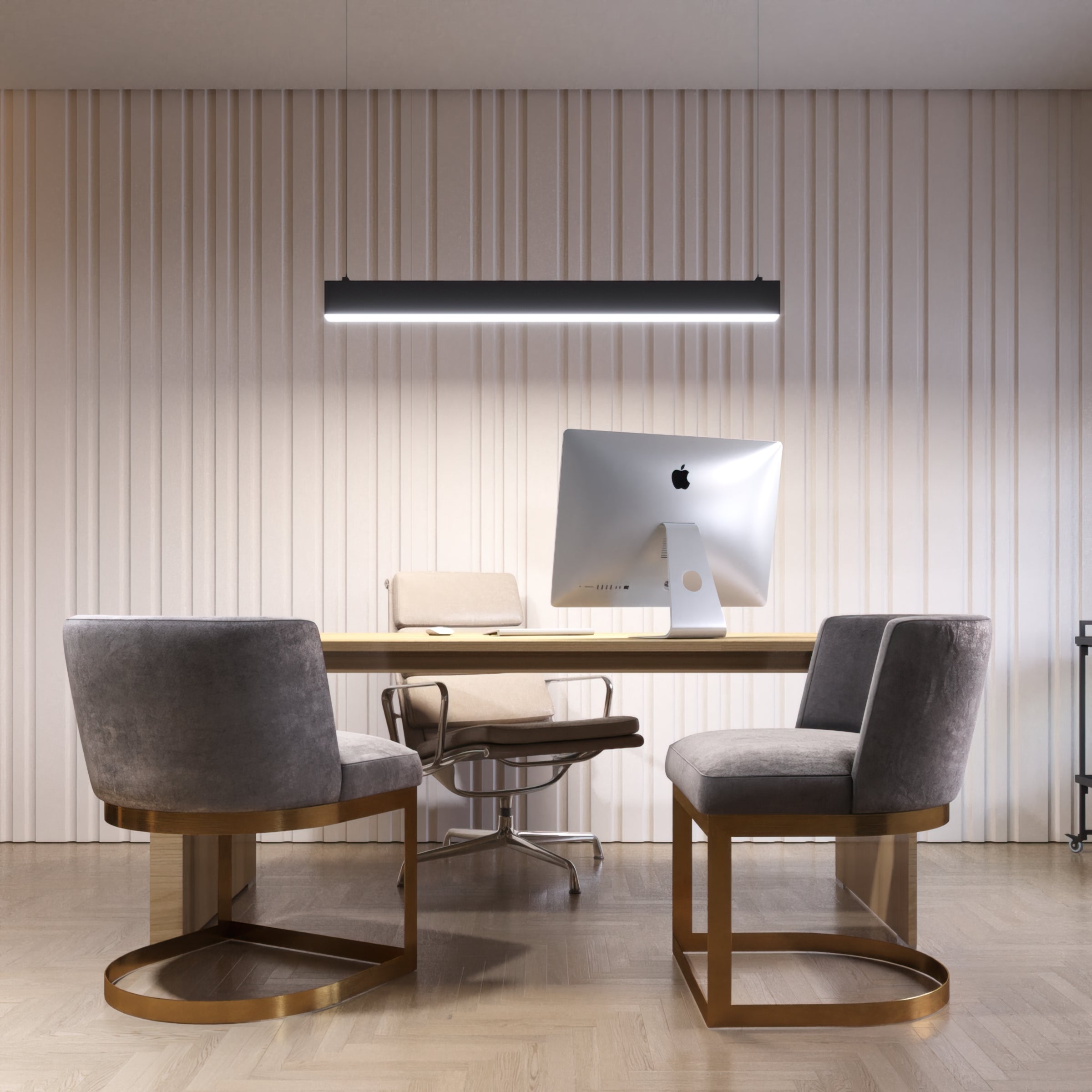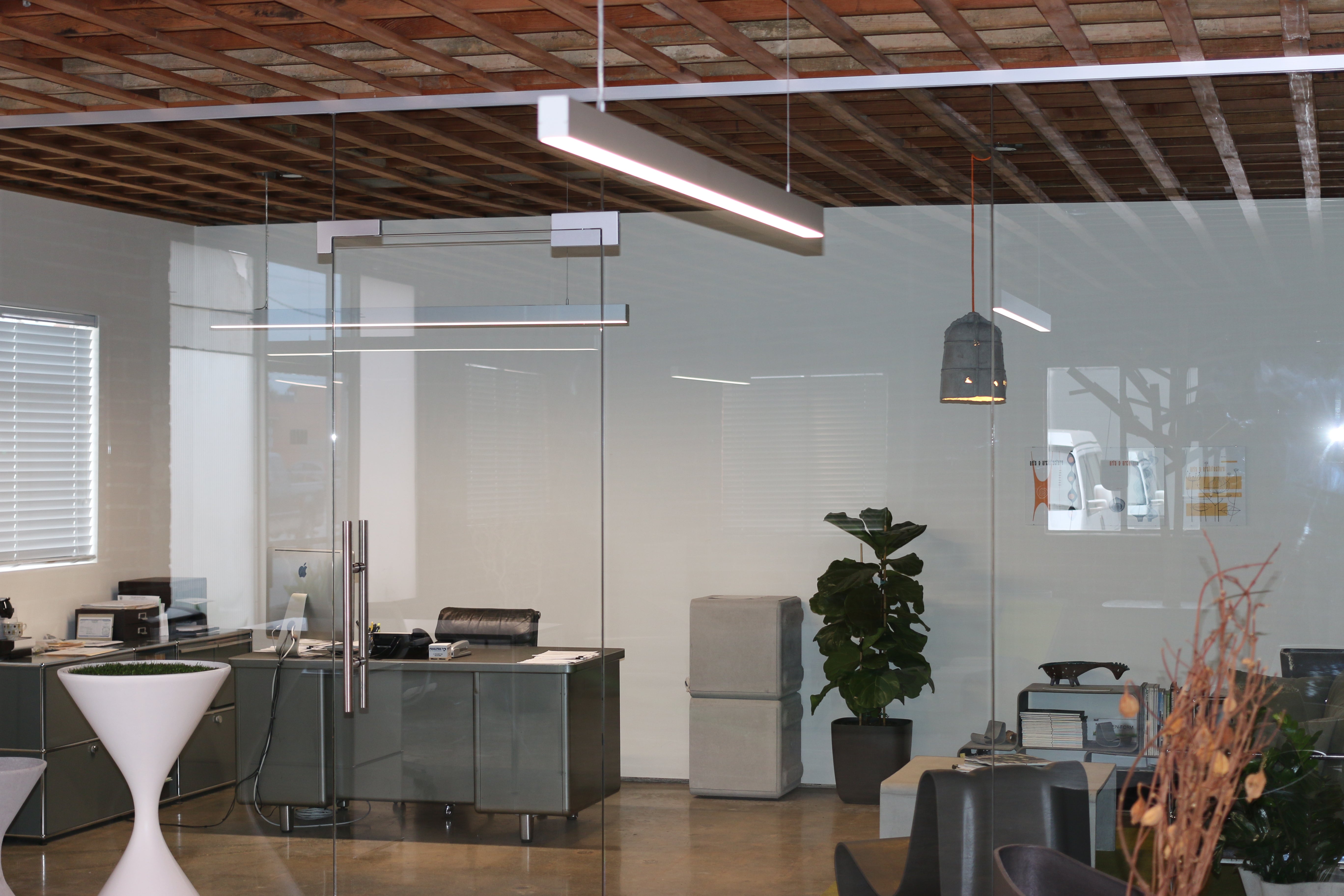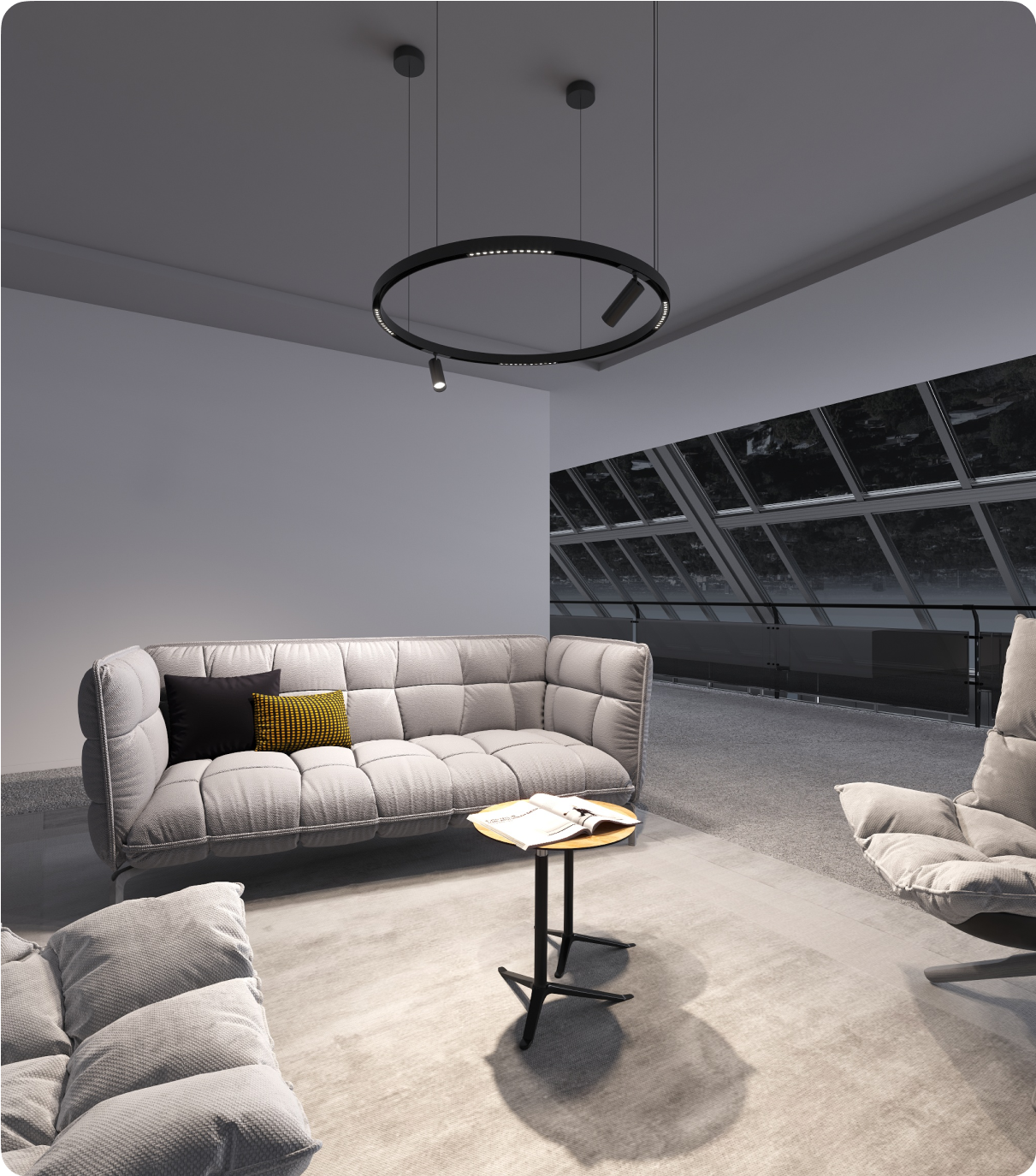Light fixtures selection is an afterthought for many people, yet they are a vital element in interior decoration. They can be statement makers or support other aesthetic pieces in the room. What is more, they are a more permanent item, which makes them one of the most significant decisions you will have when decorating a room.
However, knowing how to pick light fixtures isn't as easy as it sounds, as the options are numerous. If you have been to a store that carries light fixtures, you will understand the overwhelming feeling of having to sift through hundreds of light fixtures as you try to choose the right style while comparing other criteria like light intensity and quality of light, purpose, etc.
That's what this guide is going to help you out with. If you're looking to get the perfect fixtures for your commercial or residential space without spending hours looking for them, you've come to the right place. Let's get started because there's a lot to cover.
Type of Location
When it comes to learning how to pick light fixtures, one of the main points you need to know beforehand is the rooms you'd be installing. Some fixtures are more suitable in some rooms than others, so let the rooms dictate the layout of the fixtures.
For so many commercial buildings that have stairs, such as movie theaters and auditoriums, you need to install a strong LED on the stairs where people tread. The LED is also perfect for tables situated at the reception, shop shelf, and office environment. Here's a room-by-room guide to help you plan.
1. Entryway
Your company's entryway contributes to creating the first impression for your clients, so the grander, the better. LED ceilings are a fantastic option here. Then supplement it with either a table or floor lamp.

2. Stairways
LED channels, pendants, and flush mounts are your best bet for the stairs, especially if the entry lights do not glow over them. Provide a clearance of 46-61cm between the tip of the stairs and the tallest person in the building.

3. Offices
Start with LED strips and linear fixtures. Add table or floor lamps in dark corners or seating areas. Finally, use a desk lamp in your main work area if necessary.

4. Shops
For commercial buildings that house different shops, you can use linear, track and channel lighting to create emphasis on the items sold.

5. Restaurants
Restaurants are sometimes cozy and calm, using round ceiling and linear lights to leave the first impression on customers.

6. Galleries
Every space for displaying art works requires sufficient light to illuminate the minute details of each piece. For an art gallery, magnetic track fixtures are recommended to accentuate the work.

7. Receptions
Semi-flush mounts and LED channels can help brighten your company's reception area and create an ambiance that promotes productivity.
Keep in mind that light fixtures come in different types and sizes. We offer a wide variety of fixtures, including linear light pendants, round light pendants, magnetic track fixtures, commercial LED strips, LED channels, etc.

Room Size
One of the frustrating things about trying to install a light fixture is discovering that you have purchased the fixture of the wrong size. Picking a fixture that's too large can throw off your interior decor, while picking one that's too small can make it non-functional. You want to be sure that you've chosen the right size, as this is what allows for balance in your interior lighting plan. Here are some tips to help you choose the right size.
1. Define Light Fixtures' Height
It's important to ensure that your light fixture is within an acceptable height range as you don't want it to be too short. Otherwise, it might not be functional as planned. Conversely, a fixture that hangs very low constitutes a safety hazard. The idea is to make sure everyone can walk comfortably under the light.
The rule of the thumb here is to multiply the room height in feet by 2.5. So if the room's height is 15, your calculation will be 15 x 2.5 = 37.5 inches. That means your pendant should be a minimum of 37.5 inches for a room with 15-foot ceilings.
2. Define Light Fixture Width
Many people do not bother about light fixture width, but this is equally important as it allows the fixture to blend into the overall aesthetic of that room. The rule is to add the room's width and length, then convert it to inches. For instance, if it's 15, yours is a 20 to 15" room; the ideal width will be 36-inches.
3. Decide Size for Fixtures Over Table
If you are looking to install a chandelier or a pendant over a table, you want to first measure the dimensions of the table. Subtract 12 inches from the total width to choose the perfect size. As for height, 30-34 inches from the top of the table is ideal, but if your ceiling is taller, you can let it go up to 40 inches.
While the formulas above help you get your dream results, don't hesitate to bend the rules if you're not getting those results with these parameters.
4. Determine Ceiling Light Wattage
It is possible to know the right wattage for your room or commercial space using a simple formula. To start with, just get the square footage by multiplying the width and length of your room. For example, if the room is 7 feet long and 4 feet wide, the square footage will be 28.
Next, multiply this square footage by 1.5, that is 28 x 1.5 =42
This answer simply implies that you should opt for a light fixture that provides 42 watts of illumination in a room that is 7X4.
Type of Lighting
Lighting is a critical aspect of any interior design project, and there are different types of them. People install lighting in their rooms to suit the activities that will be carried out in them, and rooms that serve multiple purposes require a suited lighting solution. In general, lighting experts agree that there are primarily five types of lighting.
1. General
This is the most common type of lighting used to illuminate an entire room. It provides uniform levels of glow over an entire space, allowing you to see and move around safely. Compared to other types of lighting, general lighting simply serves the purpose of illumination rather than aesthetics. General lighting is usually direct but features a dimmer switch that you can use when there are variations in natural light and shadow throughout the day. Light fixtures for this type of lighting include ceiling-mounted or recessed fixtures that direct light downward.

2. Ambient
Many people think that general lighting and ambient lighting are one of the same, but this is incorrect. While ambient lighting performs the function of providing an even glow, the light is usually given direction. Thus, an ambient lighting setup uses a dimming system to control light levels, especially for entertainment purposes. Another major difference is that it doesn't create unflattering shadows. Linear lights, round lights, and magnetic track lights are good examples of fixtures to use.

3. Task
When you have a task at hand that requires concentrated brightness levels, task lighting is the type of lighting to get. It provides illumination over an area or objects so tasks can be efficiently carried out. Examples of specific tasks include reading, working at a table, etc. Because they are used in tricky situations, task lights usually have a stronger wattage and are combined with ambient light to prevent eye strain.

4. Ascent
Ascent lighting is for those that want to create special effects by highlighting specific areas, artworks, or sections of their space. It works like makeup in accentuating the image and style of objects or areas to make them more noticeable, attractive, and desirable. This type of lighting requires more lumens than task lighting. Good examples of fixtures are linear lights, round lights, and magnetic track lights.

5. Mood
As the name implies, mood lighting is all about using light to create an exact type of atmosphere. The goal here is to evoke certain emotions and reactions when people step into it. Examples include pendant LED lighting and LED profiles.

Fixture Mounting Type
Also called ceiling fixtures, mounting fixtures are widely used because they are suitable for both practical and aesthetic uses. You can use them as the primary lighting source in a room or make them a vital part of its decor. Below are the three most popular types of fixture mounts.
1. Flush Mounts
Flush mounts are fixtures that hang close to the ceiling. They are ideal for medium to larger spaces as they effectively provide illumination for the entire room without drawing any attention to themselves. Flush mounts are particularly used in rooms with low ceilings, as installing them in high ceilings will leave too much space. You can place them in the garage, commercial bathroom, gym, beauty salon, etc.
2. Semi-Flush Mounts
Semi-flush mounts combine the characteristics of flush mounts and chandeliers, making them more of a hybrid. They hang at approximately 4-8 inches from the ceiling and are available in different diameter sizes ranging from 7 to 24 inches. The major difference between semi-flush mounts and flush mounts is that while the latter directs light downwards, the former directs light both downwards and upwards to the ceiling, creating the illusion of space.
3. Pendants and Chandeliers
Pendants and chandeliers are decorative ceiling lights, which means they are meant to be the center of attraction when used in an office, hotel, cafe, retail store, etc. Chandeliers hang from a metal rod or chain and feature several bulbs, providing ample illumination. Pendants are similar to chandeliers, but the difference is that they feature only one bulb.

Functionality
Another thing to consider when shopping for fixtures is functionality. The following elements define the functionality of fixtures:
1. Color Temperature
Color temperature refers to how cool or warm a light is, and it is measured in Kelvin (K). Residential fixtures are usually between 2,700K, while commercial fixtures are generally higher than 3,500K, which means the light is very bright. For instance, 3000k implies warm, 3500 is neutral, while 4000 is cold. Warm light makes a commercial space cozy, and they are used in bars and cafes. While cool light gives a modern feel, it also highlights specific items.
2. Dimming
Dimming means reducing the amount of light a light source emits. It is a form of control that allows for the adjustment of light intensity. This lets people adjust light levels to their natural circadian rhythm. Not only does this save energy and make the space feel cozier, but it also saves money on utility bills.
3. Brightness
This refers to the amount of illumination a light fixture provides, measured in lumens. The higher the lumens of a fixture, the more the amount of brightness it provides, while fewer lumens means lower brightness.
Interior Design Style
One of the biggest questions many people ask when planning an interior light design for their space is what style they should adopt. While it's largely up to you to discover your preference and taste, fixtures can generally be grouped into minimalistic and detailed styles. Some people prefer sophisticated fixtures with many details, while others prefer something simple. Whatever style you decide, we have fixtures you'd love to have in your space. You can choose white or black options at LED Lights Direct.

